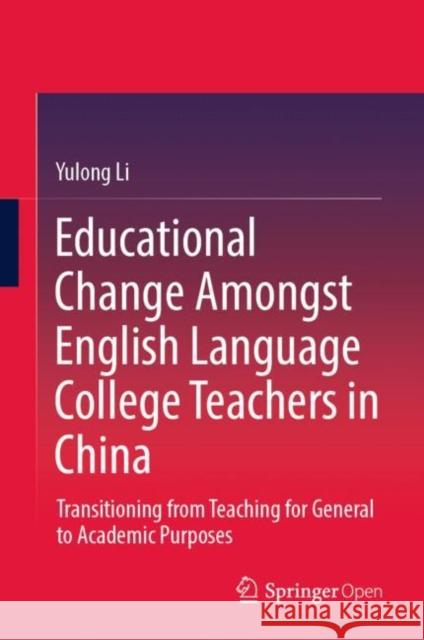Educational Change Amongst English Language College Teachers in China: Transitioning from Teaching for General to Academic Purposes » książka



Educational Change Amongst English Language College Teachers in China: Transitioning from Teaching for General to Academic Purposes
ISBN-13: 9789811530524 / Angielski / Twarda / 2020 / 149 str.
Educational Change Amongst English Language College Teachers in China: Transitioning from Teaching for General to Academic Purposes
ISBN-13: 9789811530524 / Angielski / Twarda / 2020 / 149 str.
(netto: 191,66 VAT: 5%)
Najniższa cena z 30 dni: 192,74
ok. 22 dni roboczych.
Darmowa dostawa!
Wydanie ilustrowane
"In this book, the author arranges the chapters in a systemic manner that allows EAP researchers or teachers to relate to the content immediately. ... this book still profers insightful implications theoretically and methodologically for the further development of EAP teaching ... ." (Yingbin Sun, Yan Peng and Linxin Liang, Higher Education, January 15, 2022)
"This book by Yulong Li is a timely contribution to aid our understanding ... . this book succeeds in enriching our understanding of EAP as multiple literacies ... . All in all, it is foreseeable that more universities and practitioners in China will reform the CET curriculum through offering EAP courses, and this book will be relevant and even inspiring to them. We also recommend it to EAP teachers, researchers and policy makers in similar contexts." (Nana Long, Journal of English for Academic Purposes, Vol. 55, January, 2022)
This open access book provides anthropological insights into the arduous yet rewarding journeys involved in selected TESOL teachers’ pedagogical transition to teaching English for Academic Purposes (EAP) at universities in Shanghai, the largest metropolitan area in China.
1997-2026 DolnySlask.com Agencja Internetowa
KrainaKsiazek.PL - Księgarnia Internetowa









